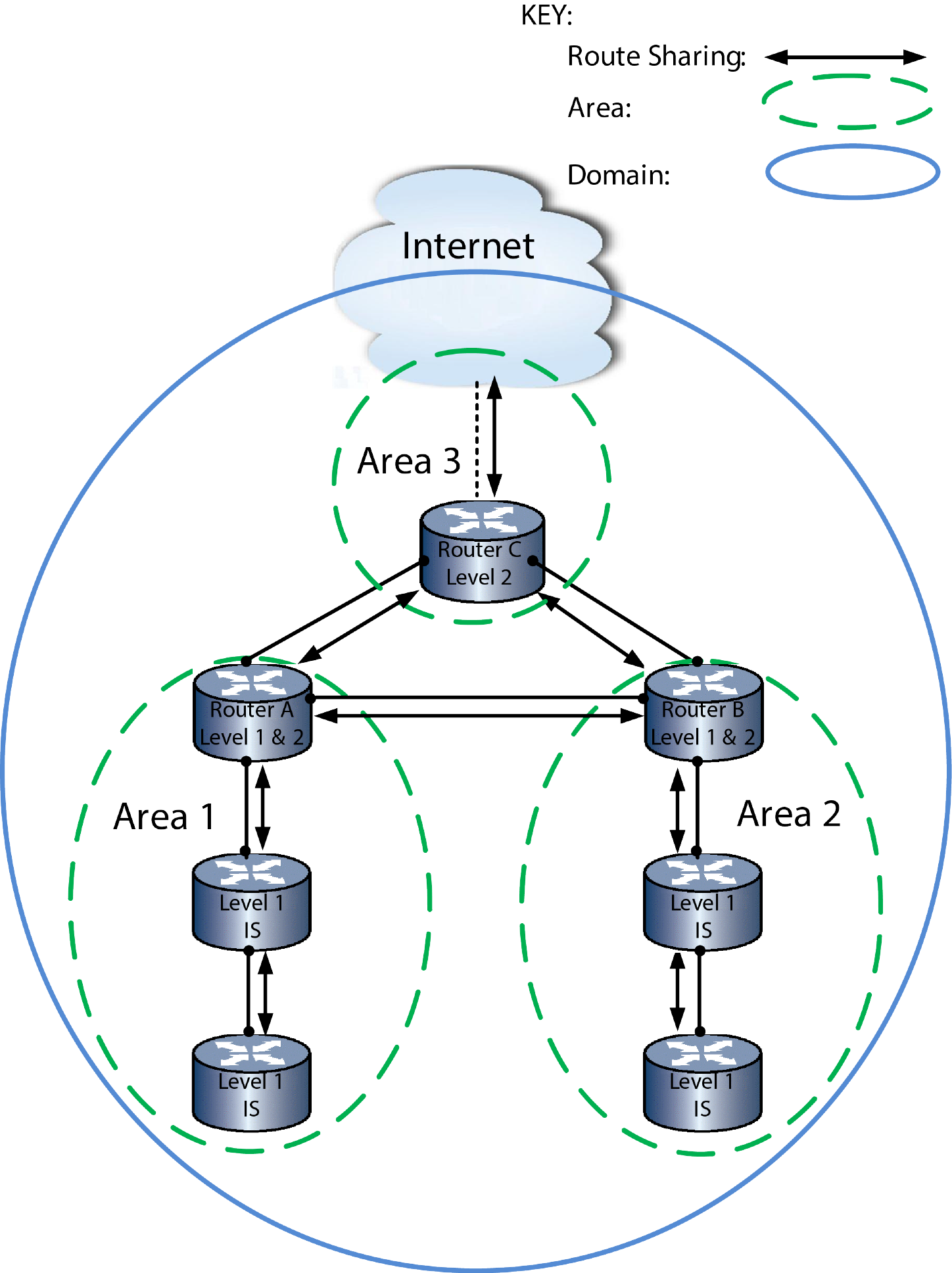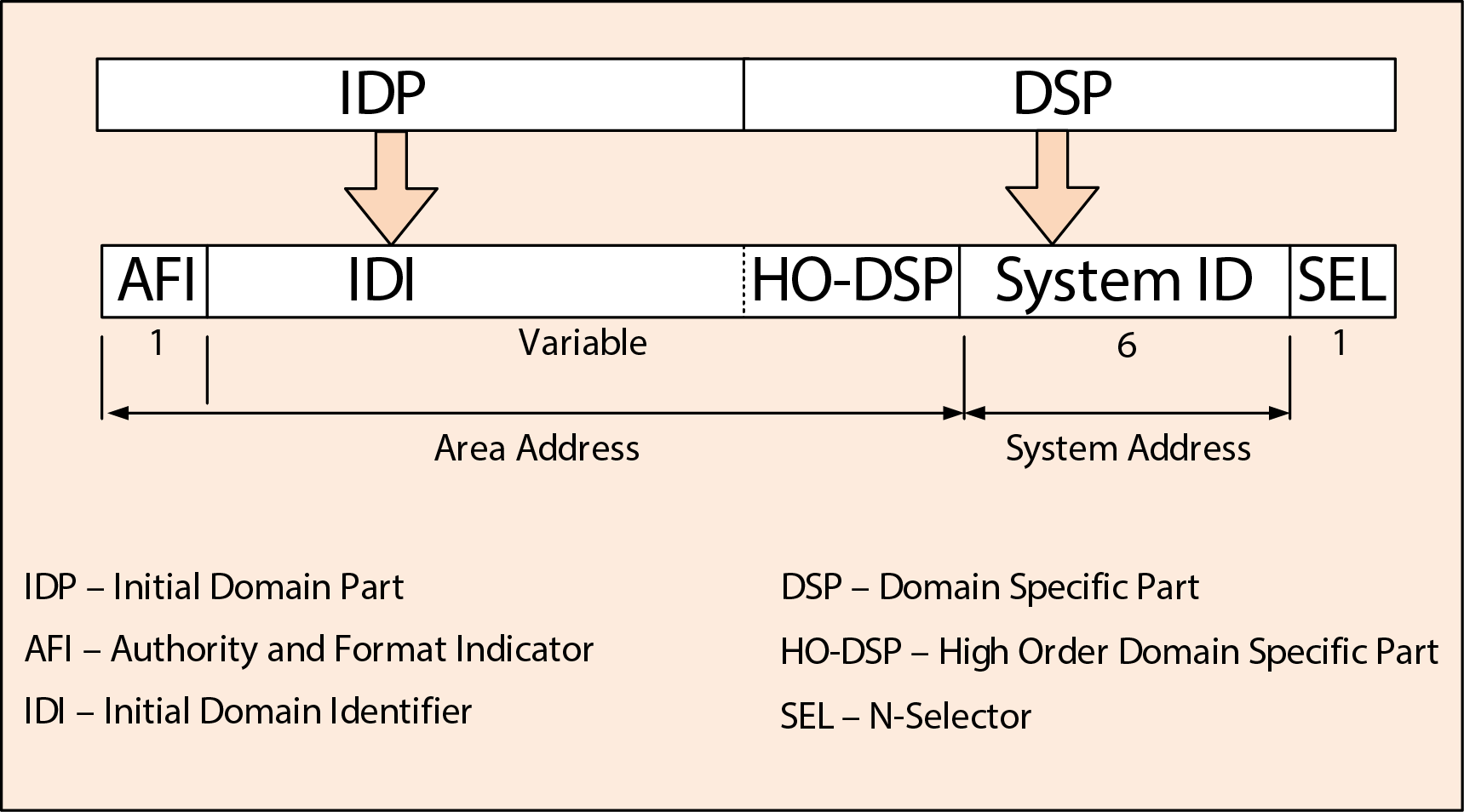IS-IS is an interior gateway link-state routing protocol, defined in ISO 10589, and operates by reliably flooding link state information throughout a network of routers within an administrative domain.
IS-IS uses the term domain to refer to any group of routers that are administered by a single organization. For example, the network owned and operated by a single carrier would be a domain. The concept of a domain is analogous to the autonomous system in OSPF.
A domain is subdivided into areas. Areas simplify management by breaking a domain into smaller entities that are easier to manage. Routing protocols that operate within the domain are known as intra-area routing protocols (Interior Gateway Protocols (IGP) in the IP world). Routing protocols that operate between domains are known as inter-area routing protocols. IS-IS handles routing information within a domain and is therefore known as an intra-area routing protocol or IGP.
Routers that handle traffic within an area are known as Level 1 routers. Routers that handle traffic between areas are known as Level 2 routers. Routers that handle traffic both within and between areas are known as Level 1 and 2 routers. Level 1 and 2 routers run two copies of the routing algorithm.
IS-IS Network Overview displays a three area domain. Routers A, B, and C all share routes with each other. The Level 1 routers belonging to areas 1 and 2 share routes with Level 1 routers within their area. If they need to reach routers outside of their respective areas, they depend upon the Level 1 and Level 2 routers (Router A and Router B) to forward frames outside of their respective areas. Area 3 intermediate systems beyond Router C are not displayed. Routers A and B forward frames to Router C and depend upon Router C to forward frames to other intermediate systems in Area 3.

IS-IS is a link-state routing protocol. That is, each intermediate system (router) in a domain is represented as being in a particular state at any given time. Depending on the state of the intermediate system, different messages are expected from neighboring intermediate systems or from that intermediate system before the intermediate system can transition to the next state and ultimately exchange routing information and process its routing tables. The packets used in the IS-IS routing protocol fall into the following classes:
Hello packets are used to initialize and maintain adjacencies between neighboring intermediate systems. There are three types of IS-IS Hello packets:
Link State PDUs (LSPs) contain link state information. There are two types of LSPs:
Sequence number PDUs are used to ensure that neighboring intermediate systems are aware of the most recent LSP from every other intermediate system. The sequence number PDUs serve a similar function to acknowledgment packets. There are two types of sequence number packets for both Level 1 and Level 2 intermediate systems:
Intermediate systems running IS-IS establish an adjacency by passing hello packets to each other. Based on the responses to those packets, an intermediate system determines whether it can establish this adjacency and whether the adjacency is a Level 1 adjacency, a Level 2 adjacency or a Level 1 and 2 adjacency.
Because IS-IS was originally designed for OSI and then evolved to include IP routing protocols, it represents intermediate systems using OSI addressing. Each node (router or end system) in OSI is known by a unique identifier known as the Network Service Access Point (NSAP). See Network Layer Addresses (NSAP) for an NSAP graphic presentation.
This address is divided into two equal parts:
The initial domain part is further broken into the authority and format indicator (AFI), which specifies the format of the IDP, and the initial domain identifier (IDI). The AFI is always one octet in length.
The DSP is further broken into the High Order Domain Specific part (HO-DPS) and the system ID and selector (SEL). The system ID is always 6 octets. The SEL is one octet in length and is always 00.
The AFI, IDI and HO-DSP make up the area address which is variable in length, depending on the value of the AFI.
The network entity title (NET) of an IS-IS intermediate system is the six-byte NSAP and a single SEL byte set to 0.


 Print
this page
Print
this page Email this topic
Email this topic Feedback
Feedback